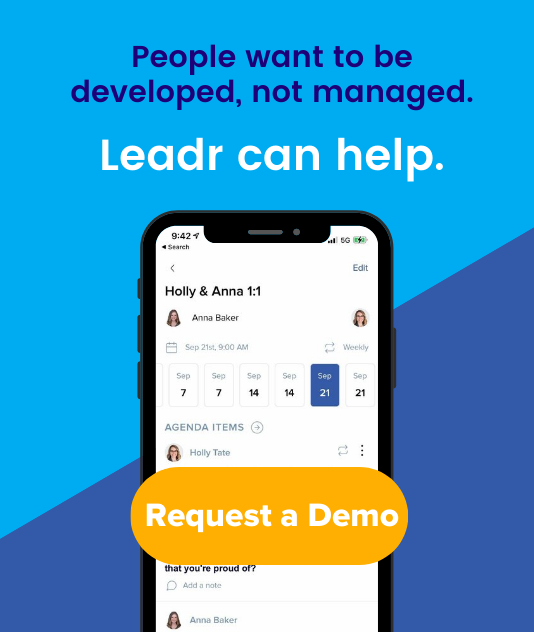3 Ways to Prioritize the Employee Experience in the Digital Age
The digital age has fully arrived in the workplace and with it, the employee experience has changed. This development has been marked by greater flexibility, collaboration, connectivity, and of course, challenges.
With hybrid and remote teams quickly becoming the norm, organizations need to work hard to ensure that personal connection and relationships don't get left behind. This is a crucial part of the employee experience in any successful organization. We’ve gathered three ways to ensure that your team can transition into the digital age with confidence.
1. Prioritize Frequent 1:1 Meetings
Let’s face it - leading remote and hybrid teams takes more work. The employee experience is altered as team members worry about losing connection with their peers, while productivity and collaboration are obstacles for leaders. At the core, leaders and employees are concerned about the same thing: effective communication.
By prioritizing frequent 1:1 meetings, you lay the groundwork for healthy collaboration between teams and leaders - especially remote teams who don’t have regular touchpoints throughout the week. These meetings are the perfect time to check-in with members of your team and provide coaching, feedback, and connection. Providing a safe space for employees to share their questions and challenges is the first step to securing team alignment and engagement.
When you begin implementing 1:1 meetings, developing trust and communication patterns takes time. One way to speed up the process of communication success with your team members is using personality assessments. The information that you learn from an assessment can help you to provide more effective feedback and develop your team according to their strengths. For example, knowing whether a person is driven by data or emotion can help you to tailor your conversations and coach effectively during your 1:1 meetings.
2. Focus of Feedback
Consistent feedback has become a vital part of the employee experience in our digital age.
It’s critical that organizations give their employees a voice. A Qualtrics report found that 65% of employees say that it is very or extremely important for their company to listen to their feedback. Employees today are motivated by feeling heard and understood. In fact, employees who feel heard are almost 70% are very or extremely likely to stay with a company longer and more than 90% will be more resilient in the face of change. To retain your key staff, you have to prioritize their perspectives.
Creating a feedback culture begins with setting clear expectations and opportunities for everyone to contribute. When feedback becomes a continuous process, you create a culture that celebrates individual strengths, helps employees grow, and empowers your team to lead and take risks.
Check out our 5 steps to delivering more effective feedback in the workplace.
3. Create Clarity
The need for clarity is also enhanced by our use of technology. Typical obstacles like busy schedules, endless task-lists, and diverse personalities can make effective communication a challenge in traditional workplaces. When the element of hybrid teams is added in, clarity becomes exceptionally important to the overall employee experience.
As a hybrid leader, your main responsibility is equipping your team for success. The number one thing your team needs from you is to know what it takes to win at your organization. Holding regular meetings where you discuss priorities and challenges with your team helps to ensure that everyone is on the same page and keeps communication from slipping. When you have 1:1 meetings, be very clear about expectations, goals, priorities, and how each individual’s work benefits the organization.
Successfully creating a culture of clarity is a team effort. If you hire the right people and give them the tools to succeed, it won’t matter where your team is located. You will see fewer problems, better execution, and happier, more productive teams.
Working in the digital age comes with its own set of challenges, but with the right culture and structures of communication, you can set your hybrid teams up for success.
Leadr helps hybrid and remote teams succeed by providing a platform for communication, collaboration, prioritizing, and feedback. Want to see Leadr in action? Let’s connect.
What strategies have you implemented to help your team successfully move into the digital age? What areas are you still working through? Share in the comments below how this new era in the workplace is affecting your team’s growth and development.
Share this
You May Also Like
These Related Stories

Your ultimate guide to solving for employee engagement and retention

4 HR Trends You Can't Ignore In 2023






No Comments Yet
Let us know what you think